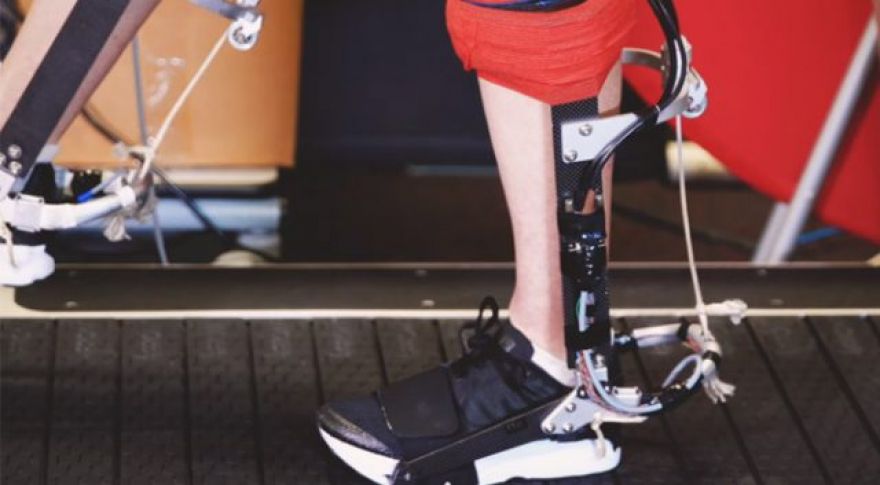
Stanford Engineers Create Ankle Exoskeleton to Boost Running Efficiency
All team sports are canceled due to coronavirus, but you can still go for a solitary run. However, the physical impact of running is too much for some people. In a bid to increase physical activity and perhaps create a new mode of transportation, Stanford University engineers have developed a that can boost speed and lower energy usage while running.
Many of the exoskeletons designs we’ve seen aim to help workers lift heavier objects. These devices work, but they’re bulky and have to attach to various points across the body. The ankle-assist exoskeleton designed at Stanford is much smaller.
For this test, the motorized element of the exoskeleton is behind a treadmill used to test the hardware. The lines that “power” the exoskeleton run up from the legs and back to the motors. The team believes it will be possible to build motors into the exoskeleton later, but they were kept separate for this initial test. Those motors don’t do all the running for you, but they can give a gentle tug at just the right time to smooth out your stride and absorb some of the load.
The team tested two modes of operation. In the more basic spring-like mode, the exoskeleton acts as a spring running parallel to the calf that stores energy at the beginning of a step and releases it when the toes push off. In fully powered mode, the motors pull the cable attached to the shoe, pulling upward during the push-off to help extend the ankle with each step. The unpowered spring mode turned out to be slightly less efficient than having no exoskeleton, but the powered mode made running 15 percent easier, based on oxygen usage for 11 test subjects. The powered exoskeleton also increased users’ maximum speed by as much as 10 percent.
A future version of this device could make running a less strenuous activity, but the team also thinks this could become part of the transportation infrastructure by addressing the last-mile problem. You could get off a bus, attach your ankle exoskeleton, and run the last mile or two to your destination without breaking a sweat.
Now read: